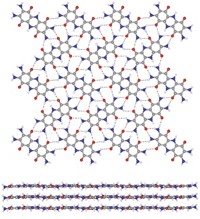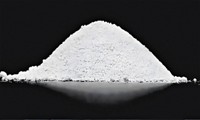Advertisement
Grab your lab coat. Let's get started
Welcome!
Welcome!
Create an account below to get 6 C&EN articles per month, receive newsletters and more - all free.
It seems this is your first time logging in online. Please enter the following information to continue.
As an ACS member you automatically get access to this site. All we need is few more details to create your reading experience.
Not you? Sign in with a different account.
Not you? Sign in with a different account.
ERROR 1
ERROR 1
ERROR 2
ERROR 2
ERROR 2
ERROR 2
ERROR 2
Password and Confirm password must match.
If you have an ACS member number, please enter it here so we can link this account to your membership. (optional)
ERROR 2
ACS values your privacy. By submitting your information, you are gaining access to C&EN and subscribing to our weekly newsletter. We use the information you provide to make your reading experience better, and we will never sell your data to third party members.
Materials
Iron is catching up to cobalt in lithium-ion batteries
A novel formulation and a little distortion bolster cathodes made with iron, which is cheaper and more abundant than cobalt
by Matt Davenport
June 12, 2017
| A version of this story appeared in
Volume 95, Issue 24
Lithium-ion batteries made it to where they are today—in cars, phones, and computers—thanks to cobalt. But cobalt’s price is in flux, and its mining operations are marred by reports of child labor and human rights abuses. More abundant, less expensive iron could curb battery makers’ reliance on cobalt. Yet batteries using iron-based cathode materials, such as lithium iron phosphate, LiFePO4, lag behind their cobalt-containing counterparts in terms of performance. Fujitsu Laboratories has now unveiled batteries using lithium iron pyrophosphate cathodes that match the voltage supplied by conventional cobalt-based devices, according to a press release. Using a proprietary process, Fujitsu created Li5.33Fe5.33(P2O7)4 crystals in which iron-oxygen clusters are distorted compared with the regular octahedrons of lithium iron phosphate. This crystal structure likely helps batteries hit higher voltages. Furthermore, the structure could be optimized to help iron-based materials catch up to cobalt in other areas, such as charge capacity, says Fujitsu research manager Shintaro Sato. Karim Zaghib, who develops lithium-ion technology for the energy supplier Hydro-Québec, commends the work, saying the new material is a good addition to research efforts aimed at minimizing cobalt in batteries.





Join the conversation
Contact the reporter
Submit a Letter to the Editor for publication
Engage with us on Twitter